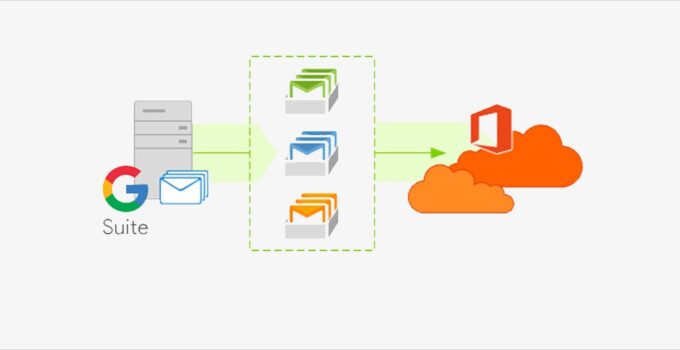Any successful company will generally be along for a decently long time and that of course entails going through various changes during that timespan. Be it firing and hiring employees or renovating the building, there are many different things that go on and get moved around during the lifecycle of a large company and one of the things that fall under this category is Active Directory Migration. It’s a process that is good practice for growing companies and when things are switched around you may as well move everything to a different server domain as well. It’s a somewhat complex process but we’ll try to simplify it and make it as effortless as possible.
What is G Suite migration?
GSuite migration is the process of moving various info such as users and settings to a Google workspace. While it sounds like a relatively simple process of just copying the existing data and putting it somewhere else, in reality, it’s a process that has quite a lot of depth and sadly isn’t nearly as simple as you may initially think. There are even professional companies like Coherence that offer these services. It’s often viewed as one of the more painful things that any IT team may need to do and few people enjoy doing so.
What makes a smooth G Suite migration?

What makes a smooth G Suite migration
In order to make the process of migrating your data from one server domain to another with Google workspace as efficient and seamless as possible, you need to take care of a few key things first. First and foremost, you want to make sure that all users are properly onboarded with their new accounts. You also want to make sure that the data is migrated in a secure way and that no sensitive info gets lost along the way. Lastly, you want to keep track of all the settings as they are moved over so that everything works as intended after the move.
You may be wondering why this kind of thing even needs to be done, but there are many reasons, ranging from basic security protocols, or oftentimes it’s just the company believing it will be a more efficient workspace this way. As previously mentioned it’s a mountain of work as you’ll also often need to edit various preferences when doing the move due to the wishes and needs of different departments. We’ll go over what you can do to make your life easier though.
Check what needs changing
Before you start migrating we highly recommend that you go through the various teams and projects in your company and check with people if their needs have changed and if something will need to be updated for them during the migration so that they can more easily do their job once things are back online. It will also allow you to more easily make a plan later on which is a very important part of this entire process.
If you don’t check in with people then you may run into the issue of needing to update their settings and preferences after they have been migrated which is more work and it’s simply far less efficient than doing so before everything is transferred. In order to avoid going through this massive pain in the neck, simply tell people to come to you with any changes that they may need so that you can do things in time instead of after the fact.
No plan is not an option

Source: t3n.de
Considering how big of an effort all of this is, you’ll understandably need to plan things out to accomplish the task while retaining your mental health. We highly recommend making a plan of how you want everything to look in the end as this will give you something to compare the end result to and see if you actually did everything well or if there are some things that need adjusting before you can actually call it a day.
It will also give you something to present to any higher-ups who are wondering about things such as how long it will take and how things are currently going. If you give them a copy of the plan then they’re less likely to breathe down your neck and potentially interrupt you during your work. It’s a sign that you know what you’re doing and that people don’t need to worry about things being in your hands, which will lead to a calmer work environment for you.
Consider migrating in chunks
Pretty much no company likes having downtime during their work as it’s considered lost revenue, which is why whenever migrations are being done the people in charge of migrating will be pestered endlessly over when things will be finished and how soon everything can be brought back online. A decent solution to this problem is migrating things in chunks as it allows most of the company to remain online and it will be far less stressful for you as you can take your time. But of course, this too requires you to plan things out as you’ll need to decide which parts can be migrated together and how much time each part will take. Never forget that migration is not only lots of work but also quite a bit of stress so try to make it as easy on yourself as possible by breaking it down into smaller and more manageable chunks.
Conclusion
We hope that our guide has helped you more easily understand Gsuite migration and how it can be simplified. Hopefully, it will lead to you retaining your sanity during an otherwise difficult process and potentially even impress the higher-ups enough for a pay raise or promotion.







